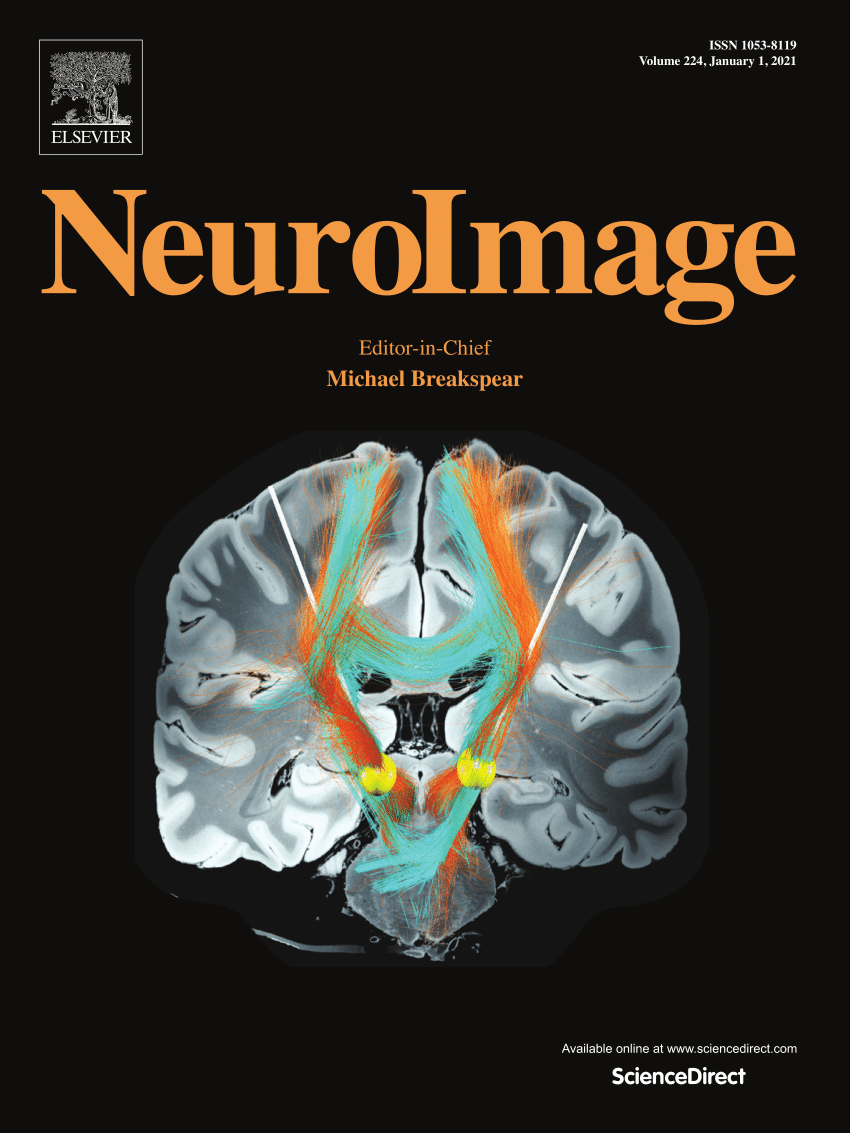Oscillatory activity in bilateral prefrontal cortices is altered by distractor strength during working memory processing
IF 4.7
2区 医学
Q1 NEUROIMAGING
引用次数: 0
Abstract
Working memory (WM) enables the temporary storage of limited information and is a central component of higher order cognitive function. Irrelevant and/or distracting information can have a negative impact on WM processing and suppressing such incoming stimuli is critical to maintaining adequate performance. However, the neural mechanisms and dynamics underlying such distractor inhibition remain poorly understood. In the current study, we enrolled 46 healthy adults (Mage: 27.92, Nfemale: 28) who completed a Sternberg type WM task with high- and low-distractor conditions during magnetoencephalography (MEG). MEG data were transformed into the time-frequency domain and significant task-related oscillatory responses were imaged to identify the underlying anatomical areas. Whole-brain paired t-tests, with cluster-based permutation testing for multiple comparisons correction, were performed to assess differences between the low- and high-distractor conditions for each oscillatory response. Across conditions, we found strong alpha and beta oscillations (i.e., decreases relative to baseline) and increases in theta power throughout the encoding and maintenance periods. Whole-brain contrasts revealed significantly stronger alpha and beta oscillations in bilateral prefrontal regions during maintenance in high- compared to low-distractor trials, with the stronger beta oscillations being centered on the left dorsolateral prefrontal cortex and right inferior frontal gyrus, while those for alpha being within the right anterior prefrontal cortices and the right middle frontal gyrus. These findings suggest that alpha and beta oscillations in the bilateral prefrontal cortices play a major role in the inhibition of distracting information during WM maintenance. Our results also contribute to prior research on cognitive control and functional inhibition, in which prefrontal regions have been widely implicated.
工作记忆处理过程中,双侧前额叶皮层的振荡活动会因分心物的强度而改变。
工作记忆(WM)能够临时存储有限的信息,是高阶认知功能的核心组成部分。无关和/或分散注意力的信息会对工作记忆的处理产生负面影响,而抑制这类刺激对保持适当的工作表现至关重要。然而,人们对这种分心抑制的神经机制和动态变化仍然知之甚少。在当前的研究中,我们招募了 46 名健康成年人(年龄:27.92 岁,女性:28 岁),他们在脑磁图(MEG)中完成了一项斯腾伯格类型的 WM 任务,其中包括高分心和低分心条件。将脑磁图数据转换到时频域,并对与任务相关的重要振荡响应进行成像,以确定潜在的解剖区域。通过全脑配对 t 检验和基于聚类的置换检验进行多重比较校正,以评估低和高牵引器条件下每种振荡反应的差异。在所有条件下,我们发现在整个编码和维持期间,α和β振荡都很强(即相对于基线下降),而θ功率则有所增加。全脑对比显示,在高分辨试验中,双侧前额叶区域的α和β振荡明显强于低分辨试验,更强的β振荡集中在左侧背外侧前额叶皮层和右侧额叶下回,而α振荡则集中在右侧前额叶皮层和右侧额叶中回。这些研究结果表明,双侧前额叶皮层中的α和β振荡在WM维持过程中对分心信息的抑制中起着重要作用。我们的研究结果也为之前关于认知控制和功能抑制的研究做出了贡献,前额叶区域在这些研究中被广泛地涉及。
本文章由计算机程序翻译,如有差异,请以英文原文为准。
求助全文
约1分钟内获得全文
求助全文
来源期刊

NeuroImage
医学-核医学
CiteScore
11.30
自引率
10.50%
发文量
809
审稿时长
63 days
期刊介绍:
NeuroImage, a Journal of Brain Function provides a vehicle for communicating important advances in acquiring, analyzing, and modelling neuroimaging data and in applying these techniques to the study of structure-function and brain-behavior relationships. Though the emphasis is on the macroscopic level of human brain organization, meso-and microscopic neuroimaging across all species will be considered if informative for understanding the aforementioned relationships.
 求助内容:
求助内容: 应助结果提醒方式:
应助结果提醒方式:


